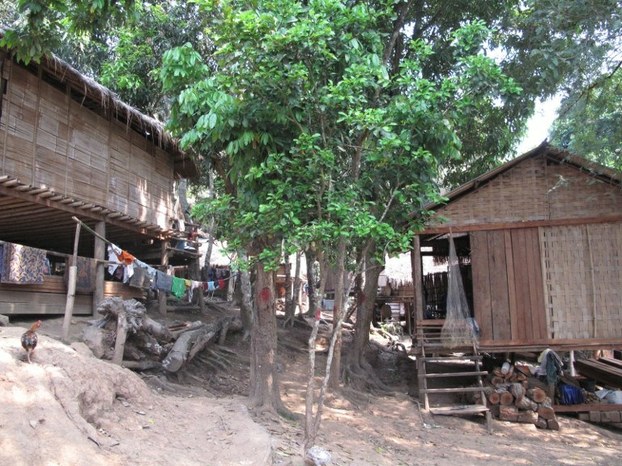Laos: Landslides wreak havoc in Xayaburi resettlement village
| Publisher | Radio Free Asia |
| Publication Date | 22 August 2013 |
| Cite as | Radio Free Asia, Laos: Landslides wreak havoc in Xayaburi resettlement village, 22 August 2013, available at: https://www.refworld.org/docid/521e0b3112.html [accessed 20 May 2023] |
| Disclaimer | This is not a UNHCR publication. UNHCR is not responsible for, nor does it necessarily endorse, its content. Any views expressed are solely those of the author or publisher and do not necessarily reflect those of UNHCR, the United Nations or its Member States. |
2013-08-22
 Houses near the Xayaburi dam construction site in a photo taken on April 12, 2011. Bangkok Post/Piyaporn Wongruang
Houses near the Xayaburi dam construction site in a photo taken on April 12, 2011. Bangkok Post/Piyaporn Wongruang
Villagers relocated to make way for the Xayaburi megadam on the Mekong River in northern Laos have been hit by landslides for the second time in two months after bad weather prevented the authorities from building a retaining wall to protect their homes.
Residents of Houay Hip, a village in Luang Prabang's Nan district newly built for those displaced by the hydropower dam, said heavy rains last week triggered landslides on a hill on the edge of the village, destroying part of the road and crushing several houses.
The village is home to some 650 residents and hundreds more being moved from near the dam are on their way there this week.
The most recent damage came after landslides in June knocked out utility poles and severed electricity supply to the village, prompting residents to ask local authorities responsible for their resettlement to build a retaining wall against the hill.
Residents said officials told them the wall could not be built until the dry season, but that they were concerned about further damage by future heavy rains and wanted the problem taken care of immediately.
Wall must wait
"The village road and a few houses, as well as duck and chicken coops, were damaged by landslides," one resident told RFA's Lao Service, speaking on condition of anonymity.
"There is no retaining wall to stop a landslide before it hits the village," the resident said.
When residents asked for the wall, project officials came to assess the situation and promised to take care of the problem, villagers said.
But later, officials told them the wall could not be built until after the end of the May-October rainy season because construction could damage houses.
"We were told it cannot be built yet because of the rains and has to wait until the dry season," the same resident said.
Resettlement
Houay Hip is currently home to villagers moved there from Pak Nern and Khok Gnai villages since January last year.
Some 250 residents from Houay Deua are being relocated there this week, and a total of 1,000 people from three other villages – Passak, Phonesavanh, and Pak Lern – are scheduled to be moved there later.
According to the Vientiane Times, in total about 2,000 people have been or will soon be relocated to make way for the dam, which is still in the early stages of construction.
Another 1,000 in eight villages are being required to move to higher ground within their communities, the paper reported.
Once completed in 2018, the dam will generate electricity mostly for export to Thailand, forming a key part of landlocked Laos's plans to become the "battery of Southeast Asia" by selling electricity to its neighbors.
But environmental groups have said Laos is building the dam without enough study of likely socioeconomic impacts and have raised concerns about the management of the resettlement process.
Reported by RFA's Lao Service. Translated by Viengsay Luangkhot. Written in English by Rachel Vandenbrink.
Link to original story on RFA website
